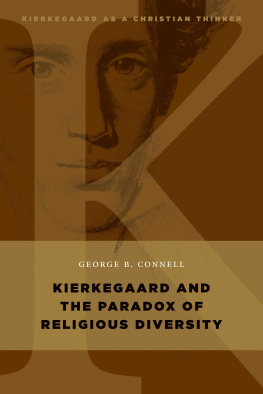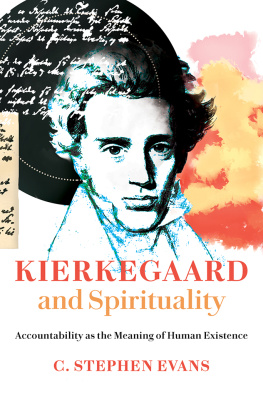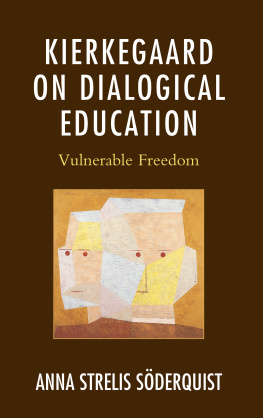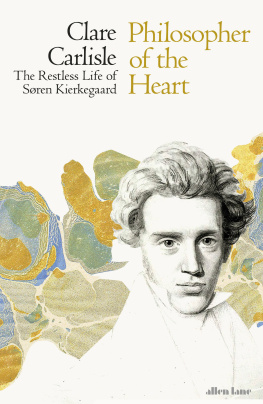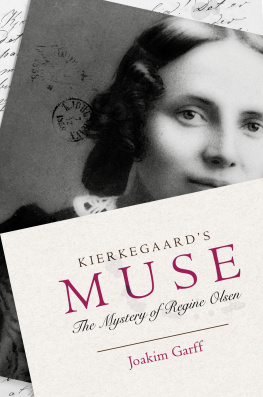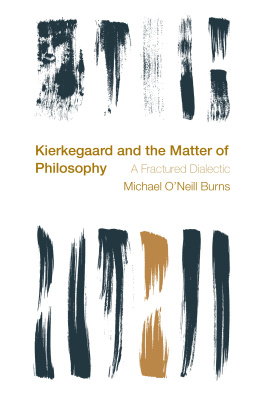ENCOUNTERS WITH KIERKEGAARD

ENCOUNTERS WITH KIERKE GAARD
A Life as Seen by His Contemporaries
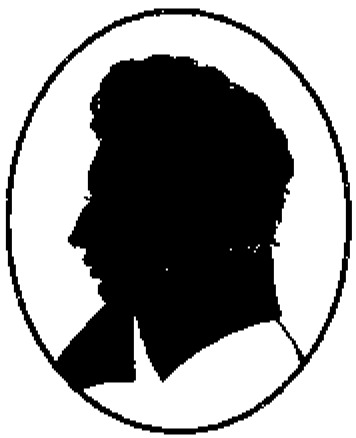
Collected, Edited, and Annotated by
BRUCE H. KIRMMSE
Translated by
Bruce H. Kirmmse and Virginia R. Laursen
PRINCETON UNIVERSITY PRESS PRINCETON, NEW JERSEY
Copyright 1996 by Princeton University Press
Published by Princeton University Press, 41 William Street,
Princeton, New Jersey 08540
In the United Kingdom: Princeton University Press,
Chichester, West Sussex
All Rights Reserved
Library of Congress Cataloging-in-Publication Data
Encounters with Kierkegaard : a life as seen by
his contemporaries / collected, edited, and
annotated by Bruce H. Kirmmse; translated by
Bruce H. Kirmmse and Virginia R. Laursen.
p. cm.
Includes bibliographical references (p. ) and index.
ISBN 0-691-01106-0
ISBN 0-691-05894-6 (pbk.)
eISBN 978-0-691-22188-5
1. Kierkegaard, Sren, 1813-1855. 2. PhilosophersDenmark
Biography. 3. Authors, DanishDenmarkBiography.
4. TheologiansDenmarkBiography.
I. Kirmmse, Bruce H.
B4376.E43 1996
198'.9 DC20 [B] 95-43183
http://pup.princeton.edu
R0
SREN KIERKEGAARD WAS NOT SO INSCRUTABLE AND MYSTERIOUS. INDEED, EVERYONE WHO CAME INTO CLOSE CONTACT WITH HIM WAS ABLE TO SEE SOMETHING OF THE REALITY OF HIS SPIRITUAL ESSENCE. SOME PEOPLE CAN SURELY STILL REMEMBER HIM AS A YOUNG MAN, WHEN HE WAS FEISTY AND COMBATIVE AND USED THE KEEN-EDGED WEAPONS OF DIALECTIC AND IRONY TO FIGHT FOR POETIC IDEALS AGAINST PROSAIC MEDIOCRITY. OTHERS WILL REMEMBER HIM A BIT OLDER, WHEN, WITH THE HIGHEST OF GOALS BEFORE HIM, HE WORKED "IN THE SERVICE OF DIVINITY" WITH AN ENERGETIC WILL, UNDAUNTED BY PHYSICAL WEAKNESS, COMPRESSING INTO A FEW SHORT YEARS THE SUBSTANCE OF A LONG AND FRUITFUL LIFE. STILL OTHERS, PERHAPS ONLY A FEW, WILL REMEMBER HIM DURING HIS FINAL YEARS. THEY WILL RECALL THAT DURING HIS EARNEST STRUGGLE WHEN "HIS WISH WAS DEATH, HIS LONGING THE GRAVE, HIS DESIRE THAT THIS WISH AND THIS LONGING MIGHT SOON BE FULFILLED" HE RETAINED A LOVING CONCERN FOR OTHERS, EVEN FOR LIFE'S SMALLEST DETAILS; THAT HE RETAINED GENTLENESS, FRIENDLINESS, EVEN PLAYFULNESS; THAT HE RETAINED AN EVEN-TEMPERED SPIRIT AND CLARITY OF THOUGHT; AND THAT HE RETAINED ABOVE ALL PEACE AND REPOSE IN THE FAITH WHICH HE HAD WON FOR HIMSELF WITH GREAT EFFORTS AND WHICH NEVER FAILED HIM, EVEN DURING THE SEVERE SUFFERING OF HIS DEATHBED. DIFFERENT PEOPLE MAY WELL HAVE SEEN DIFFERENT SIDES OF HIS PERSONALITY, SOME HIS STRENGTHS, SOME HIS FAILINGS, BUT NO ONE WHO WAS CLOSE TO HIM FAILED TO RECEIVE AN IMPRESSION OF A MARKEDLY ARTISTIC LIFE, WHICH IN PAIN OR IN JOY WAS IN THE SERVICE OF THE IDEA AND WAS SACRIFICED FOR IT.
From "Sren Kierkegaards literaire Efterladenskaber" [Sren Kierkegaard's Literary Remains], a review of SKEP 1833-43 by an anonymous reviewer who was actually Christian Frederik Molbech (see the notes to the Brchner-Molbech correspondence in chapter n of this book); the review appeared in Dagbladet [The Daily News], no. 46 (February 24, 1870). Molbech drew much of the present text from a letter to him from Hans Brchner, dated February 17, 1856; see the Brchner-Molbech correspondence in chapter 11 of this book.
Contents

ix
xi
xv
xix
99
Illustrations

Preface and Acknowledgments

SREN KIERKEGAARD (181355) left neither memoirs nor an autobiography. In addition to his vast body of published work, which runs to twenty volumes in the latest Danish edition and which will run to twenty-six volumes in English translation upon completion of the new Princeton University Press edition, Kierkegaard left an even larger corpus of unpublished papers and journals, which constitutes twenty-two large volumes in the current Danish edition. Included in this enormous mass of materials, published and unpublished, are several highly tendentious essays in self-interpretation, including most notably The Point of View for My Activity as an Author and On My Activity as an Author, but nothing like the memoirs left by other nineteenth-century writers.
Kierkegaard was viewed in his time as a mysterious personage. Indeed, some thought that he deliberately cultivated an air of mystery and eccentricity. He was an odd though familiar figure to many people, some of whom remembered their encounters with Kierkegaard and subsequently wrote them down. Although a difficult writer in a minor language and the resident of a small city, Kierkegaard eventually became world-famous. By the time of his early death in 1855, he had already achieved a remarkable fame (or notoriety) in his native Denmark, where he was engaged in a furious assault upon the established Church. Several thousand people attended his funeral service, and it was feared that a riot might break out at his burial, where an illegal and incendiary speech was in fact delivered.
Kierkegaard immediately became a cult figure, and the Kierkegaard biography industry was launched soon after his death, with no end in sight. In the absence of a proper autobiography, and spurred on by the enormous and baffling maze of his published works and (especially) by his unpublished papers, which appear to contradict one another on a number of points and in which researchers have been able to find just about any Kierkegaard they were looking for, a considerable body of myth has developed around the enigmatic Danish genius.
Much of what has been written about Kierkegaard goes well beyond all available evidence. All that we really have, in addition to Kierkegaard's own writings, is a rather slender stock of accounts by those who had or claimed to have had direct knowledge of him. Most of these accounts by his contemporaries are not contemporary in the strictest sense, but were written down ten, twenty, or more years after Kierkegaard's death. The publication in 1869 of the first volume of Kierkegaard's unpublished papers, the Efterladte Papirer [Posthumous Papers], edited by H. P. Barfod, set off a new wave of interest in Kierkegaard. Now many relatives, friends, acquaintances, schoolmates, university colleagues, opponents, and even those who had had more casual contact with him on the street or in the chance encounters of daily life rushed to put their reminiscences on paper. By the turn of the century or soon thereafter, the final chance had come for reports from all who could claim to have known Kierkegaard, even as children.
While there are quite a number of individual accounts by those who knew Kierkegaard, or who claimed to have known him, the total size of this fund of information is rather modest. The individual reports vary considerably in length, in style, andundoubtedlyin reliability. There can be no doubt that many individual accounts may have been colored by the passage of time after the events they claim to portray, influenced, for example, by Kierkegaard's writings themselves, his publicly known traits and eccentricities, his attack on the Church, and especially by the myths which grew up around him after his death and after the publication of his posthumous papers. While some of these accounts may expose the sources of the myths which surround Kierkegaard, there is also the danger that they may to some extent reinforce those myths rather than act as an external check upon them. Nonetheless, they are the only sourcesother than Kierkegaard's own writingsthat we have, and they are very much worth reading. While the individual reports often tend to contradict one another in details, they also tend to point in the same direction and to reinforce one another, so that a collective and identifiable portrait emerges. For the general reader, who has perhaps read a bit of Kierkegaard, this collection forms an intriguing "do-it-yourself biography of the great thinker, while for the scholar it is an indispensable resource. The present work is intended as a convenient sourcebook of all putative firsthand accounts of Sren Kierkegaard, as complete as possible and accompanied by explanatory commentary. In the future, as additional material comes to light, it can be added to the present collection. The intention of this collection is to include all contemporary accounts of a biographical nature, but not the scholarly and critical reception of Kierkegaard's works themselves. It has occasionally been difficult to draw this line, and in doubtful cases inclusion has generally been the rule; thus, although they do not strictly fit the category of biographical materials, a number of letters containing comments on Kierkegaard's attack on the Church have been included. A more comprehensive view of the contemporary critical reception of Kierkegaard's writings will be the subject of future work. The first eight chapters of the present work cover Kierkegaard's life in chronological order. The final three chapters contain lengthier accounts, covering broader segments of time, by family members and others who knew Kierkegaard.



